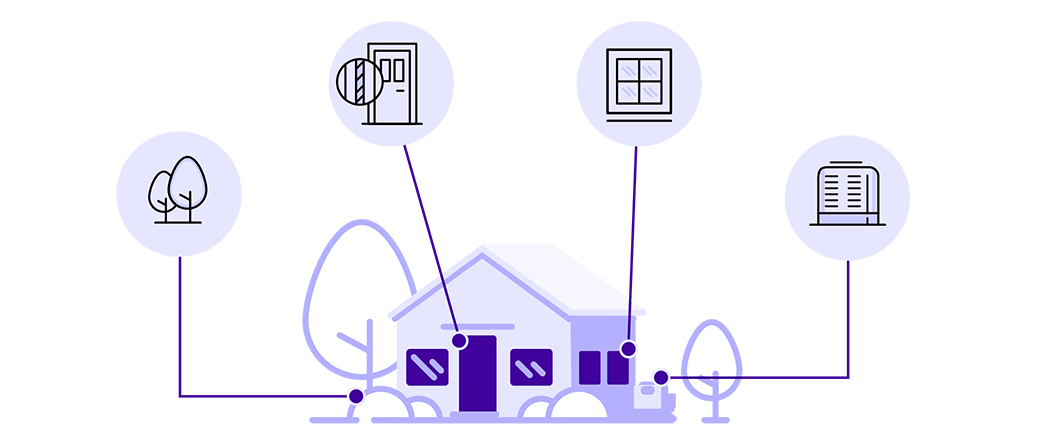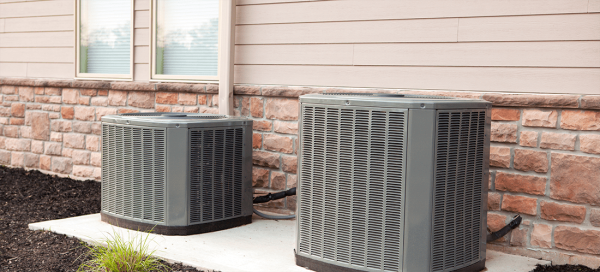Looking to cut your energy bill? We’ve collected a hit list of helpful tactics in one article. We’ll cover:
Energy saving habits (using less electricity)
Efficiency (making your home more efficient), including home improvements you can make to cut costs
Renewable energy options
The Rising Costs of Electricity
All across our state, electricity consumption adds up to more than $24 billion a year, the highest among US states. According to EcoWatch, an average Texan’s monthly energy bill is just under $160, although the costs are on the rise. The price of energy rose by 61% over the course of the last decade, and 18% between 2021 and 2022 alone.
Back in 2002, in an effort to combat rising prices the state deregulated the electricity industry, so residents and businesses could purchase energy from a retail electric provider of their choice. This has led not only to improved customer service, but also allows customers to tailor energy choices to meet their budget and lifestyle.
No matter which energy provider they choose, residents are increasingly making efforts to curb energy use and ensure that homes, in particular, are as efficient as possible. So we have put together a checklist of ways that you can lower your electricity bills without sacrificing quality, reliability, or comfort.
Energy-Saving: Easy Strategies to Follow
There are cost-effective steps you can take to make your home more energy efficient, and some improvements are things that you can do yourself.
Employ Natural Light
Also known as daylighting, this is the practice of using natural light to illuminate your home’s interior, and it can be as simple as it sounds. Open your blinds and curtains during the day to let in as much sunlight as possible, brightening your living space, reducing the need for artificial lighting, and helping heat your home. You can even paint your walls lighter colors, making rooms appear brighter.
You can also install skylights or even light shelves, which bounce light deep into a building. Clerestory windows are short and wide windows set high on a wall, protected from the summer sun by a roof overhang but allowing winter sun to shine through for natural lighting and warmth. And light tubes use a special lens to amplify low-level light and reduce the intense rays of the noontime sun, channeling light along a highly reflective tube and through a diffuser designed to distribute it evenly.
Sealing and Weatherstripping
Be sure that your home is properly sealed to avoid heated or cooled air from escaping. Some places where air leakage commonly happen include window frames, doors, mail slots, attic access hatches, and anywhere that there is a hole in a wall – including switch plates, electrical outlets, and around pipes and wires. A little bit of caulk or weatherstripping on these areas can make a big difference. And don’t forget to plug and seal any holes in your attic; since hot air rises through your house to the highest point, attics are often the biggest culprits for heat loss.
Use Energy During Off Peak Hours
Third, be mindful of reducing or shifting your electricity usage so it is not during peak periods – what the Department of Energy calls “Demand Response.” For example, dial up your thermostat overnight, and then turn it down during the morning hours (6:00 to 8:59 am) when demand for energy is at its peak; also do a load of laundry or charge your electric vehicle during times when energy costs less.
Strategic Landscaping
Outside your home, clever landscaping can have a big impact on your heating and cooling systems. Shading is a big part of this: carefully positioned trees can reduce a home’s energy consumption by up to 25%. Use a large bush or row of shrubs to shade a patio or driveway, reducing heat radiation and cooling the air before it reaches your home’s walls and windows. Additionally, shading your air conditioner can increase its efficiency by 10%. And in open areas with a lot of wind, plant windbreaks to the north, west, and east of a house to cut energy consumption by up to 40%. Even houses with windbreaks placed only on the windward side, from which the wind is blowing, average 25% less fuel consumption than unprotected similar homes.
Use less Air Conditioning and Heating
Another great way to save energy dollars seasonally is to use less air conditioning and heating. Consider setting your thermostat at 78° in the summer and 68° in the winter – each degree cooler or warmer will increase your energy use by 6-8%.
For colder winters, you might install a wood stove or pellet stove, which are drastically more efficient sources of heat than furnaces. For the summer months, install a ceiling fan, which can help blow cool air around your home and so reduce strain on your air conditioning unit. And if you have a programmable thermostat, avoid placing lamps or TV sets near the sensor, as they can cause the air conditioning to run longer than necessary.
Efficiency: Home Upgrades Anyone Can Make
Insulation and Sealing
If you are building or upgrading your home, then the insulation, sealing and weatherproofing are key. A home with inadequate attic insulation can lose as much as 40% of its air conditioning in the summer and because heat rises, up to 60% of heat can be lost during the winter months. An additional 1/3 of a home’s total heat loss typically occurs through its windows and doors. So ensuring that your insulation is up to snuff, window panes are properly glazed, and doors have weatherstripping is worth the effort. Not only will this save you money, it will increase the level of comfort indoors. If you want to go an extra step, according to the American Society of Heating, Refrigerating, and Air Conditioning Engineers, think about double or triple pane windows – which can improve a home’s energy efficiency performance by 40% or more.
Smart Thermostats
Another great option to consider is a smart thermostat. Not only can it be programmed for energy savings (for example to run warmer during off-peak energy cost hours), but newer models also come with artificial intelligence (AI) optimization capabilities, so they can learn when you like to adjust the temperature and create a personalized heating and cooling schedule. In fact, heating, ventilation and air conditioning (HVAC) systems are smarter than ever these days, with high efficiency options designed to reduce energy usage. Some even can be paired with energy recovery ventilators, which transfer heat energy between incoming and outgoing airstreams, pre-cooling or pre-heating the air entering your home so your HVAC system has less work to do, runs more efficiently, and costs less every month.
Smart Appliances
Smart appliances are also worth considering. ENERGY STAR certified refrigerators, dishwashers, clothes washers, dryers and room air conditioners use less energy, and those that are connected to the Smart Grid offer consumers new functionality that can enable added convenience and even more savings. The same goes for automated lighting controls and HVAC systems with smart scheduling and energy usage monitoring.
Evaporative Coolers
Particularly worth considering in our dry Texas summers? An evaporative cooler. Also sometimes called swamp coolers, they use moisture to cool incoming hot air before blowing it out into your living areas. They’re most effective in regions with low humidity, helping regulate the temperature of indoor spaces that are well-ventilated or even outdoor areas like garage workshops and patios.
Energy-Efficient Roofing and Attic Insulation
If the time has come to replace your roof, consider using energy-efficient materials. According to the Green Building Alliance, 90% of roofs in the United States are poorly designed and constructed with dark, non-reflective materials that absorb rather than reflect heat. This means that rooftop temperatures can be 90 to 100 degrees hotter than the outside air temperature; this heat transfers into your attic and, ultimately, into the living spaces in your home, making your air conditioning work harder. Lighter color roofing reflects heat better than darker colors, and reflective coatings can add even more heat resistance.
You can also install radiant barrier insulation in your attic. Made of a highly reflective material that reflects radiant heat rather than absorbing it, this helps block heat flow coming through the roof, reducing summer heat gain and cooling costs.
Phase Change Materials for Construction
When it comes to other construction materials, consider Phase Change Materials for thermal mass: the simplest and cheapest phase change material is water, which freezes to ice and evaporates to steam. The same principle can be applied by incorporating PCMs like industrial paraffin wax to concrete and plaster exterior and finishing layers, wallboards and floors to increase the thermal capacity of a building – the PCM passes from the solid to the liquid state, absorbing and storing energy. Read more at the National Institute of Health’s National Library of Medicine, or talk to your contractor about PCM options.
Solar and Tankless Water Heaters
Solar water heating systems are becoming more popular, using the sun’s energy rather than drawing energy from the grid to warm water. The use of tankless water heaters is also on the rise – these heat water on demand rather than heating and storing it in a tank, and can be used for your whole house or at the point of use, such as a single bathroom’s shower and sink.
Heat Pump Water Heaters
Heat pump water heaters are another option: most homeowners who have heat pumps use them to heat and cool their homes, but did you know that a heat pump can also be used to heat water? These systems use electricity to move heat from one place to another, pulling heat from the surrounding air and transferring it at a higher temperature to heat water in a storage tank, rather than generating heat directly (and so can be two to three times more energy efficient than conventional electric water heaters).
Hot Water Recirculation and Thermostatic Mixing Valves
Hot water recirculating systems bring benefits at several levels. They reduce wasted water usage while you are waiting for water to heat up at the tap – in short, they bring hot water directly to the faucet when needed and, if it goes unused, return it to the hot water heater. A recirculating pump is installed into the plumbing lines to create a loop that constantly circulates heated water in the hot water pipes, so when you turn on the shower the hot water is ready. This also requires less energy, because the excess hot water is stored and doesn’t need to be reheated. And thermostatic mixing valves (TMVs) blend hot water with cold water to ensure constant, safe shower and bath outlet temperatures to prevent scalding and overuse of heated water. Lastly, thanks to advances in technology it is possible to draw heat from waste water, for example from a shower, and preheat cold water with it. This is called a greywater heat recovery system, because it keeps the heat of running water from being lost down the drain.
Exploring Renewable Energy Options
Residential Solar and Wind Power
Your options abound when it comes to renewable energy. You might consider installing solar panels on your home, or invest in a residential wind turbine. According to the Department of Energy, a typical home uses approximately 877 kilowatt hours of electricity per month. Depending on the average wind speed in your area, a residential turbine rated in the range of 5-15 kilowatts would be needed to make a significant contribution to this demand, but could be worthwhile, especially if renewable energy is important to you.
Wind Energy Certificates and Co-Ops
You could also purchase wind energy certificates, verifying that wind farms are contributing to the amount of energy that you draw from the electric grid, or even participate in a wind power co-op. These are locally owned by farmers, investors, businesses, schools, or utilities who use wind energy to support and reduce energy costs to a local community; the energy they produce can be used either for on-site power or to generate wholesale power for sale back to the grid.

Group Energy Buying
Similarly, group energy buying options allow a community to save, together. Neighbors can join forces to negotiate collectively with providers for lower rates, bulk purchase renewable energy credits, fund energy efficiency projects, share access to energy storage systems, or even join in investing in solar and wind projects. Not only do these projects lower costs, they also have other benefits: for example, they can increase property values and shared solar panels can do away with the need for rooftop insulations.
Renewable Energy Certificates
Additionally, Renewable Energy Certificates (RECs) from Rhythm Energy enable homes and businesses to demonstrate their commitment to renewable energy. Each individual REC represents one megawatt (MWh) of clean energy generated, representing the clean energy going into the electric grid on your behalf.
Even better, Rhythm Energy offers a variety of 100% renewable energy plans like the Texas Breeze Plan, with all of the energy generated in Texas – rather than in other states. Protecting air and water quality, reducing pollution, boosting our local economy and creating jobs. From simple and straightforward plans for smarter energy use to exceptional customer service, we’re here to help.
Did you know that there are funds and rebates available for some energy-efficient home improvements, specific to Texas? Learn more information about solar electricity plans, solar incentives and tax credits.




